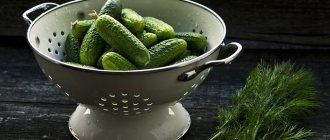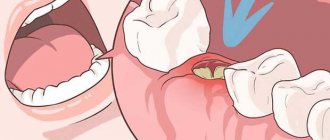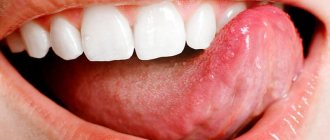Green poop in a baby can be the result of various reasons, including those that do not harm his health. However, when green stool appears, it is important to pay attention to factors such as stool consistency, frequency of bowel movements, odor, and the presence of impurities.
If you have any doubts about the child’s well-being, you should urgently seek advice from a specialist, since this symptom may also mean the presence of pathology in the child’s body.
What kind of stool should a baby have?
The baby's stool should be yellow.
The norm is that the baby's stool is yellow in color, has a mushy consistency and a sour odor.
This usually happens in children who are bottle-fed and who regularly receive food of a stable composition.
A breastfed baby's stool may vary in color, smell, and consistency. The reason for this is the composition of breast milk, which can change under the influence of many factors:
- mother's diet;
- her psycho-emotional state
- lactation period
The baby's first stool after birth is black with greenish streaks, it is very thick and tight. This stool (meconium) is normal and should not be a cause for concern.
These are epithelial cells, mucus and amniotic fluid accumulated in the intestines of a newborn. With proper development and breastfeeding of the baby, after a few days the stool becomes liquid and turns green.
During the first two months of life, the baby can have bowel movements from three to twelve times a day, ideally after each feeding. Also, stool during this period can be an indicator of proper lactation. If the baby has not had a bowel movement for 24 hours, this may indicate that he is not receiving enough milk.
Green feces
Fungus
Diarrhea
Vomit
Ulcer
24395 December 27
IMPORTANT!
The information in this section cannot be used for self-diagnosis and self-treatment.
In case of pain or other exacerbation of the disease, diagnostic tests should be prescribed only by the attending physician. To make a diagnosis and properly prescribe treatment, you should contact your doctor. Green feces: causes of appearance, what diseases it occurs with, diagnosis and treatment methods.
Definition
Greenish-colored feces in people of any age can be both a variant of the norm and evidence of serious changes in the body.
Feces is a waste product of the body, formed in the large intestine, consisting of 80% water and 20% dry matter. The dry residue includes undigested food (40%), almost completely non-viable intestinal microflora (30%), secretions from the glands of the intestinal wall (mucus) and dead cells of the intestinal mucosa (30%).
The composition and nature of feces are determined by nutrition, the state of the digestive system, intestinal microflora, and the presence of concomitant diseases.
The normal intestinal microflora includes a large number of bifidobacteria and lactobacilli, Escherichia coli, and bacteroides. They are useful because they perform a protective function and inhibit the proliferation of pathogenic microorganisms. Enterobacteriaceae, enterococci, clostridia, staphylococci, streptococci, and fungi of the genus Candida are present in smaller quantities in the intestines. If they multiply uncontrolled, they can cause unpleasant symptoms.
Varieties of green feces
Green feces are found in normal and pathological conditions. With the pathological nature of the stool, the patient’s general well-being changes, the frequency of bowel movements, the consistency of the stool, its smell, and impurities of mucus, pus, and blood may appear.
Possible causes of green stool
The most common cause of green stool without changing its other characteristics is the consumption of green plant foods - spinach, sorrel, lettuce, etc., as well as products containing green food coloring. In this case, the color of the stool will normalize on its own within one to two days after stopping the use of the listed products.
Another variant of the norm is meconium - the first stool of a newborn. It is viscous, sticky, dark green in color, and consists of dead cells of the intestinal wall, mucus, amniotic fluid, and bile.
The intestines of a newborn baby are gradually populated by microorganisms. At the same time, the composition of the microflora of a breastfed baby, despite the predominance of lacto- and bifidobacteria, is more variable than that of a bottle-fed baby.
Some bacteria can affect the color of stool and turn it green. If you feel well, have an appetite and there are no other symptoms, these phenomena are considered normal.
A persistent disturbance in the composition of the intestinal microflora (dysbacteriosis) is considered a pathological condition that affects the color of stool.
When taking tablets and capsules of iron, excess iron is eliminated naturally, and the stool becomes dark, greenish, or even black.
Feces completely restore their characteristics after completing the course of medication.
Possible causes of green stool include infectious and inflammatory diseases of the stomach, small and large intestines.
What diseases cause stool to turn green?
Lactase deficiency
– a congenital or acquired condition in which the activity of the lactase enzyme and the ability to digest lactose are absent or reduced. Congenital lactase deficiency begins to appear in early childhood and persists throughout life; transient deficiency develops against the background of immaturity of the gastrointestinal tract (GIT) of the newborn (occurs at 3-6 weeks of life and decreases as the child grows and develops). Secondary lactase deficiency is a consequence of a previous disease, accompanied by damage to the cells of the intestinal wall.
The main symptoms of lactase deficiency are severe bloating, intestinal colic, and loose, foamy stools after drinking breast milk or whole cow's milk.
With insufficient processing of lactose in the gastrointestinal tract, fermentation and decay processes begin, which cannot but affect the composition of the microflora. If there is a pronounced imbalance of microorganisms, green stool may appear.
A violation of the ratio of normal and pathogenic intestinal microflora is called
dysbiosis
. This condition can occur against the background of a sudden change in diet, with insufficient consumption of plant foods and dairy products, due to inflammatory processes in the gastrointestinal tract, stomach and duodenal ulcers, infectious lesions of the small or large intestine, after taking a course of antibacterial drugs, against the background of decreased immunity .
Symptoms of dysbiosis include constipation or unstable stools, impaired processing and absorption of beneficial nutrients, bloating and abdominal pain.
Intestinal infections that are characterized by the appearance of green stool include dysentery, giardiasis, salmonellosis, and rotavirus.
Dysentery
are caused by bacteria of the genus Shigella, which are excreted in the feces of a sick person or carrier. Shigella enters the body through dirty hands, and after 2–3 days the development of the disease begins. Bacteria multiply in the large intestine, irritating and damaging its wall.
Symptoms of dysentery are a false, painful urge to defecate, as well as frequent, scanty, loose, dark green stools mixed with blood, mucus, and pus.
The patient's general health deteriorates, he is worried about weakness, and his body temperature rises. At the same time, due to small stools, the risk of dehydration remains low, but perforation of the intestinal wall is possible.
Giardiasis
Caused by the protozoan Giardia. The transmission mechanism is fecal-oral, infection is possible through direct contact with a sick person or through contaminated water and food. It takes up to four weeks from the moment of infection to the manifestation of symptoms. Children and adults with low acidity of gastric juice are more likely to get sick.
Protozoa cause symptoms of inflammation of the small intestine: nausea, bloating, pain in the upper and middle thirds, around the navel, frequent (up to 5 times a day) liquid, copious, foamy, foul-smelling green stools.
Extraintestinal manifestations are also possible - skin rashes, severe allergic reactions.
Giardia
Salmonellosis
caused by bacteria of the genus Salmonella. They enter the human body through poorly cooked eggs, dairy products and meat. The period from infection to the onset of disease manifestation lasts up to two days. Symptoms of salmonellosis include spasmodic pain in the upper abdomen and near the navel, nausea, vomiting (up to 3 times a day), as well as frequent (up to 15 times a day) copious, liquid, foamy, foul-smelling stools the color of swamp mud.
The disease is dangerous due to severe intoxication, dehydration, possible entry of salmonella into the blood and disruption of the functions of many organs and systems (sepsis).
Rotavirus
spreads through food, water, airborne droplets, and household contact. It is perfectly preserved in the external environment and is resistant to most disinfectants. For the development of the disease, just a few viral particles enter the mouth. It begins with symptoms of an acute respiratory viral infection - increased body temperature, redness and soreness of the throat. Then comes frequent, profuse vomiting and frequent (5–15 times a day) loose stools, which can be of different shades, including yellow-green. Against this background, dehydration quickly develops.
Which doctors should I contact?
If there are signs of an intestinal infection, especially in a child, it is best to call an ambulance team, which, if necessary, will take the patient to an infectious diseases hospital.
In other cases, you should contact , , , .
Diagnostics and examinations for the appearance of green stool
To establish the causes of green stool, the doctor conducts a thorough survey and examination of the patient, clarifies the diet and nature of the diet, and clarifies concomitant diseases and conditions.
For a more complete understanding of the picture, a number of laboratory and instrumental research methods may be required:
- general blood test with a detailed leukocyte formula;
Causes of green poop in babies
During the period when teeth are being cut, there may be greenness in the stool.
Green poop in a baby can be considered normal. If your baby drinks only breast milk, the following factors can affect the greenness of the stool:
- The child’s body, in this way, gets rid of bilirubin;
- after being exposed to open air, feces oxidize;
- there are hormones in the stool that reach the baby through breast milk;
- green poop appears with the development of viral infections;
- the appearance of green poop at the age of 1 month indicates that the child’s body has not yet developed enough beneficial bacteria;
- the development of dysbacteriosis is accompanied by a pungent putrefactive odor.
- the child feeds only on liquid front milk, and cannot reach the hind (fat) milk, which gives color to the stool;
- During the period when teeth are being cut, intestinal dysfunction occurs, which can cause green stools for a short time.
The child began to be fed foods with which his intestines were not yet familiar. For some time, until adaptation has passed, how can it be green. Typically, the color of stool depends on what the baby eats along with breast milk. Green poop may appear due to:
- Mom ate little milk and a lot of greens (broccoli, dill, parsley, lettuce);
- Mom ate a lot of carbohydrates;
- the mother suffers from food poisoning, toxins that enter the child’s body through breast milk affect the color of the stool;
Green stool in formula-fed babies can occur if the baby is given a formula containing iron. The formula needs to be replaced and everything should be back to normal soon. Very often, baby poop turns green for no specific reason. If your baby is active and there are no other signs of pain, then there is no need to worry.
Thematic video will tell you about the baby’s stool:
Constipation in infants when introducing complementary foods
The introduction of complementary foods, that is, the transition to a qualitatively new type of food, often causes constipation, even if previously everything was in order with the baby’s digestion. Complementary feeding products are recommended to be introduced into children's diets in addition to breast milk or formula from 4 to 6 months. Errors in introducing complementary foods can cause constipation in a baby:
- If complementary foods are introduced to a baby before 4 months, his digestion will not yet cope with other products other than breast milk or its substitutes.
- If complementary foods are introduced on time, but the consistency of the food is too thick, this can also cause constipation. Dense food will have difficulty moving through the still immature intestines. Of course, it’s difficult to make pureed zucchini or broccoli too thick, but with porridge it’s quite possible to miss the mark. Make sure that at the beginning of introducing complementary foods, the porridge is no thicker in consistency than liquid sour cream, and only then gradually transfer the baby to thicker food.
- Constipation can be caused by eating rice porridge as a first food if the child is prone to constipation. For a baby with a dense build, especially if he has stool retention, it is worth choosing vegetables to start complementary feeding. The best porridges for first feeding are buckwheat or corn. Do not forget that porridge at the beginning of complementary feeding should be dairy-free and consist of one type of cereal.
- With the introduction of complementary foods, the baby begins to need additional fluid. Offer him baby water in a bottle, cup or sippy cup throughout the day. Let him drink at least a sip. During the day, the volume of additional liquid should be approximately equal to what the baby eats in one feeding, this is about 150 - 200 ml. If water does not enter the baby’s body additionally, it will be absorbed, including from stool, which will become denser and dryer.
Green stool in a child after one year
Allergies provoke green stools.
Green stool in a child, no matter what age, should always have a logical explanation for its origin.
If in the first months of life he speaks of disturbances in the digestive system, then in children after 1 year of age he speaks of the presence of infections. Other factors that can cause green stools:
- congenital pathologies of the digestive tract;
- development of infections;
- disruption of the immune or endocrine system;
- staphylococcal infection
- presence of intestinal parasites;
- taking certain medications
- allergy.
In any case, if the color of the stool changes, you need to be examined by a doctor and take tests to diagnose the disease and prescribe surgical treatment.
Psychosomatics for constipation
If the child is only a month old, he will not experience constipation of psychosomatic origin. The central and autonomic nervous systems must mature to fully regulate intestinal function. Psychosomatics as the cause of constipation can be assumed in a child aged a year and a half or older, that is, at the time when he begins to be potty trained. Constipation for psychosomatic reasons can occur if:
- the baby has already experienced pain during bowel movements and is afraid of its repetition, so he holds back stool;
- parents force the child to sit on the potty, but this is unpleasant and scary for him;
- parents scold or punish the child for dirty and wet pants;
- there is an unfavorable emotional situation in the family, poor relationships between parents, a negative attitude towards the child;
- the child went to kindergarten or changed children's group. Constipation can be caused both by stress and by the fact that the baby is embarrassed to go to the potty in the presence of other children and other adults (teachers, nannies).
Almost all children experience constipation. For some these are isolated cases, for others they are regular. Parents should know what can cause constipation and how to deal with it.
So
- To help a child with constipation, first of all, sufficient fluid intake will help: in the form of an additional portion of water, both before and during the period of introducing complementary foods. You cannot use medications, enemas, or folk remedies without a doctor’s prescription.
- To prevent and treat constipation, it is worth mastering tummy massage techniques: circular, counter strokes and stroking the lateral sections of the abdomen.
- Constipation in a mother can cause the same digestive problems in a breastfed baby.
- Rotavirus infection can also cause constipation in a child.
- The period of increased risk of constipation is the introduction of complementary foods.
- During teething, constipation can be caused by poor appetite and loss of moisture due to increased body temperature.
- Prophylactic doses of vitamin D3 do not cause constipation, unlike an overdose.
- Psychosomatics as a cause of constipation begins to play a role when the child reaches the age of potty training, that is, from a year and a half and older.
(0 ratings; article rating 0)
Share Share Share
What does green diarrhea mean?
Dysbacteriosis is the cause of diarrhea.
If an infant has loose green stools for several days, and the baby is lethargic and restless, then this may be diarrhea, which has developed due to the following reasons:
- Intestinal infection. Occurs under the influence of E. coli, various microbes, dysentery, paratyphoid microorganisms. The first sign is a high temperature. The baby behaves restlessly, often burps, refuses food, and loose stools appear.
- Dysbacteriosis. The most common diagnosis is the gastrointestinal tract. This develops as a result of a disturbance in the composition of the microflora, which leads to malfunctions of the digestive system. In addition to green diarrhea, the child experiences bloating, colic, and skin rashes. The specialist prescribes various types of lactic bacteria and yeast.
- Viral infection. Due to the fact that the child’s immune system is not yet developed, it depends on the state of the intestinal microflora. Therefore, green diarrhea can develop from a viral infection, or even from a simple cold.
- Allergy. Mothers can be triggered by diet, changing formula, or medications. Also, when antibiotics are prescribed, diarrhea is inevitable in most cases.
Teething symptoms
The body reacts to the appearance of chewing organs with discomfort and pain.
- The baby cries, is capricious, puts everything in his mouth because his gums itch.
- Profuse salivation appears. This can provoke coughing, even with vomiting.
- Inflammation of the gums in a child is diagnosed.
- Often there is a symptom such as an allergy. Redness is visible in the area of the cheeks and chin.
- Children's temperature rises and their tummy becomes hard.
- The functioning of the gastrointestinal tract is disrupted. This manifests itself in the form of flatulence, diarrhea or irregular bowel movements. The child is constantly pushing.
- The body's defenses are reduced.
The same symptoms have different causes. Therefore, you should not make a diagnosis yourself. When warning signs are noticed, it is better to seek the services of a qualified doctor. Parents should not ignore discomfort in the tummy, excessive straining during bowel movements, regular colic, and the appearance of dense feces in the form of separate fragments.
What should oral hygiene be like when teething?
Oral hygiene and caries prevention are important to reduce the likelihood of secondary infection. Brush your baby's teeth using a special napkin impregnated with xylitol and anti-inflammatory components (sold in pharmacies without a prescription). Do not give your child sweet food or drink, especially at night; Do not dip the pacifier in honey or sugar. When the first tooth emerges, visit your pediatric dentist to schedule periodic checkups [6]. Maintain a calm atmosphere in the house and carefully follow the pediatrician's instructions, this will help the child cope with teething easier.
How to prevent vomiting during teething in children[4]
Following simple pediatric recommendations alleviates the child’s condition and reduces the likelihood of vomiting.
- Calm the baby down. Physical well-being directly depends on his emotional state, especially with an excitable nervous system. If he is breastfed, during teething, do not wean him from the breast, do not introduce new types of complementary foods. The baby may ask for the breast more often than usual, since sucking has a sedative effect, but immediately throws it away and cries due to unpleasant sensations in the gums. Therefore, doctors do not recommend changing the feeding regimen.
- Give your baby a teether that he can gnaw and chew. It can be filled with liquid to cool the gums and relieve swelling, then it is kept in the refrigerator. Some children do not show interest in soft silicone and latex teethers, preferring to chew on crib railings or any other hard objects. In this case, a wooden teether is suitable. It is best for it to be perceived as a toy that is interesting to be distracted by. It is washed with clean water and given to the child under the supervision of parents 3-4 times a day for a short time. Make sure that the teether is intact so that your baby does not get hurt or choke on a piece of wood.
- If the pain and itching are too severe, you can use external and internal anti-inflammatory drugs (as prescribed by your doctor) to reduce them. A popular solution is special dental gels, available in pharmacies without a prescription. However, they should not be rubbed into the gums more than 2-3 times a day and you should familiarize yourself with the contraindications before use.
- Using damp cotton swabs, clean the child's nose of secretions to allow him to breathe freely and prevent a secondary infection. Pediatricians also recommend rinsing the nose with saline or sterile sea water, which can be purchased at the pharmacy in the form of drops or sprays.
Some dental gels can be purchased without a prescription.
Many are made with benzocaine (check the product label). The US Food and Drug Administration (FDA) warns against using them without medical supervision. FDA recommends that parents of children under 2 years of age not use medications containing benzocaine American Dental Association [6]
Signs of tooth growth
According to leading pediatricians, the main signs when a child is teething are:
- Increased salivation. The mucous secretion protects the oral cavity from foreign microorganisms.
- Swollen gums. Swelling and redness of the soft tissues in the mouth, through which the incisor tooth is clearly visible.
- Anxiety. The baby is noticeably nervous and fussing, experiencing painful sensations in the gums.
- The baby chews on foreign objects. When itchy gums, mechanical compression reduces pain, which is why the baby bites toys.
- Cold symptoms. General weakness, low-grade body temperature, malaise are common symptoms during teething. The cause is a slight inflammation of the gums.
- Intestinal disorder. Increased salivation and constant biting of objects contribute to infection, which leads to diarrhea.
- Runny nose. Increased secretion of saliva causes the formation of snot. The symptom disappears after a few days.
Teething is a favorable time for the occurrence of other diseases, since during this period the infant’s fragile immune defense is most vulnerable.
Signs of dental growth – the child is restless, puts his hand in his mouth
How to help your baby
All therapeutic procedures must be prescribed by a doctor. Self-treatment is dangerous for the health of the baby. Those recipes offered by traditional healers may not be suitable for a newborn baby. Pharmaceutical preparations for children are available in the form of pleasant-tasting syrups. Kids don't refuse them. By turning to pediatric dentistry, parents can be confident in the success of the therapy. When the symptoms of the disease begin to subside, you should not stop taking the medications. This is done with the doctor's permission.
Natural laxatives include fruit purees made from fresh apples or apricots. They are baked in the oven, peeled from the rough crust, and ground. This supplement is usually allowed to be introduced into the diet in small portions from 4.5 months. If the intestines “like” complementary foods, the dose is gradually increased. The pediatrician may prescribe mild sedatives. After all, the nervous system takes an active part in the formation of units.
The mother of the baby should also follow the diet. She can eat dried apricots, prunes, and limit starchy dishes from rice, pasta, and potatoes. Flour products should be consumed with stewed vegetables. After all, everything that a mother eats enters the newborn’s body with her milk. For children in this condition, play activities in the form of moving their legs, arms, and lightly stroking their tummy are useful. When artificial feeding, you need to replace wheat and rice mixtures with buckwheat or oatmeal. A special teether with rough spikes will calm the nervous system, which reduces itching of the gums.










